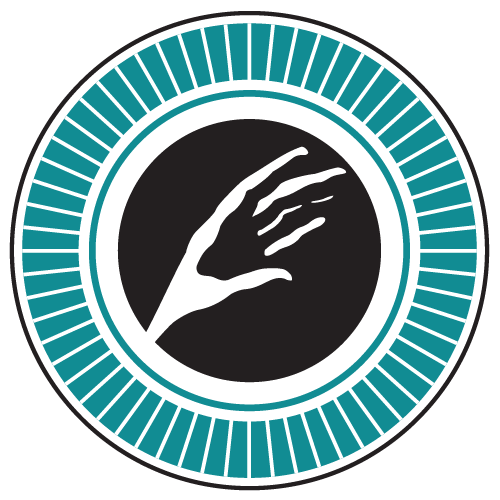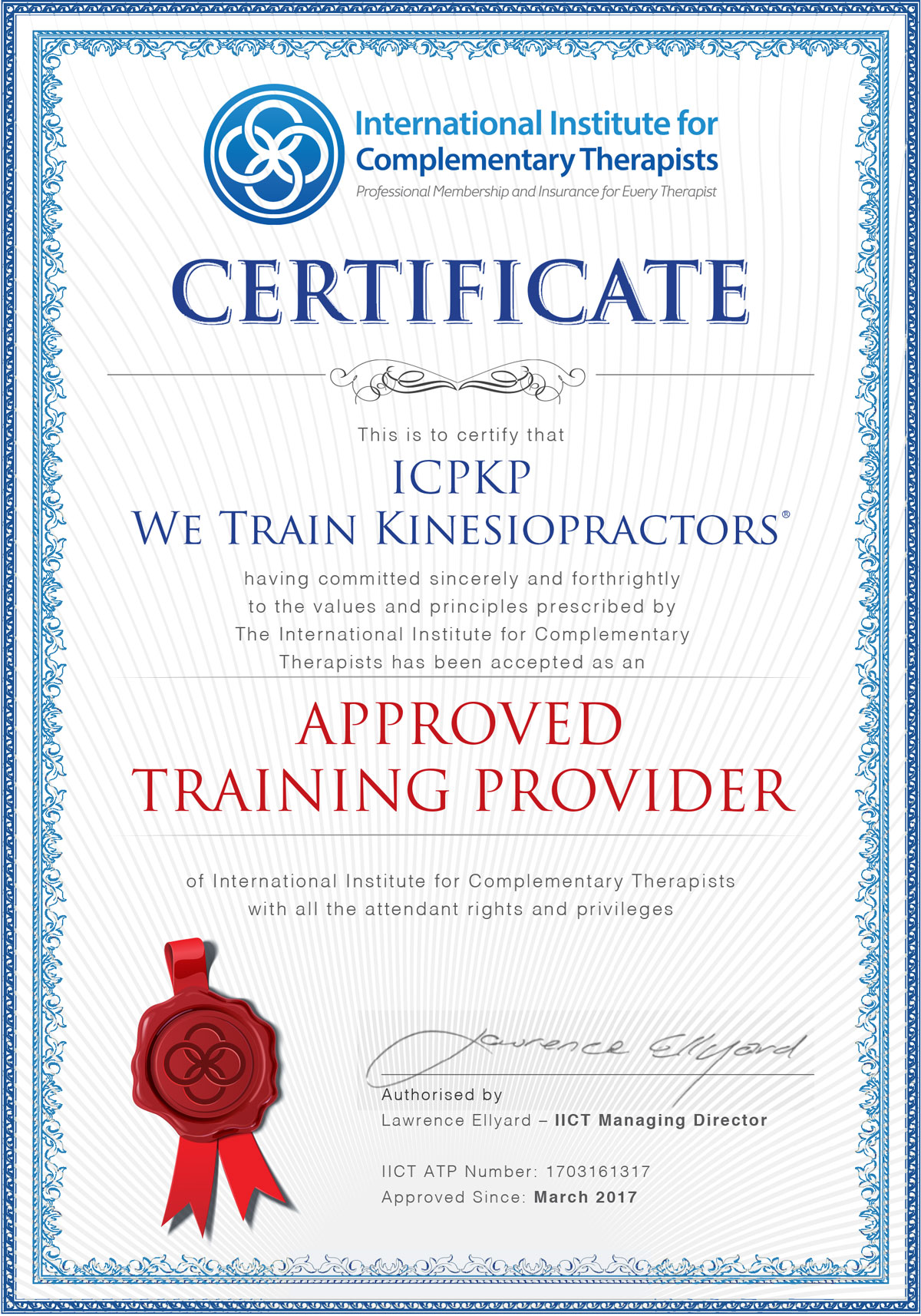Kinesiopractic® In Detail
What is Kinesiopractic®?
Kinesiology training schools have sprung up in many countries, and all have their own protagonists. The Professional Kinesiology Practice (PKP) methods have moved away from the more diagnostic approaches of Applied Kinesiology and its offshoots. A basic premise of PKP is that practitioners do not treat named diseases, they work in a different model of energy medicine altogether. The importance of this concept is what defines kinesiopractic® and will be explained further.
The origins of manual muscle testing lie in the work of western physicians and chiropractors, including George Goodheart D.C. (Goodheart, 2005, Kendall and Kendall, 1949). Known as kinesiology, the art of manually testing muscles became inextricably linked with Five Element Acupuncture Theory and the new profession of Kinesiology evolved as a blend of Western and Eastern medical thought.
Western medicine describes the human body as a closed system:
Western medicine describes the human body as a closed system with a traditionally separated mind and body. Medical choices are based on the rationale of Newtonian science, and on research undertaken using the separateness of observation. The observer is held to be separate from what is being observed and measured. This way of looking at things and the requirement to provide evidence of efficacy, or usefulness, has been adopted by our education systems, our health services, and even business models. The idea that we are a closed system has led to us separating ourselves from each other, our eco-system, and our planetary system.
Chinese acupuncture describes the body as an open system:
Importantly, Chinese acupuncture theory describes the body as an open system, with the end points of the various meridians in the distal regions of the limbs, being the conduits for Ki or Chi flow between the internal systems of the body and the external world, (Tsuyoshi Ohnishi and Ohnishi, 2008). This connection of the body with the outside world explains the importance of context in muscle testing. Each human body is connected via its acupuncture system to the information that is in the outside world.
With a body as an open system, we are connected to each other, the eco- system and the planetary system. This connection also helps to explain why a PKP balance can result in changes to a person’s external world as well as their own internal changes. The work of physicists such as David Bohm, with his theory of the Implicate/Explicate order and Basil Hiley’s mathematics to support that thesis, support the concept that the body is an open system (Bohm and Hiley, 1993). Chris Clarke(2002), Maurice Merleau-Ponty, (2002) and Henryk Skolimowski (1994) have all published similar thoughts.
No inter-examiner reliability has yet been satisfactorily proven in applied kinesiology research (Frese et al., 1987, Bohannon, 1997, Cuthbert and Goodheart Jr., 2007), as it appears that each practitioner brings their own life context to the muscle testing interaction with the life context of the client. No two practitioners will present the same life context even if they share the same client.
Talk of energy
Chi, Ki or acupuncture flow is variously described as energy, vitality, life energy, or healing energy. Any use of the word energy is fraught with conflict for those trained in western science who associate energy with work and the force needed to complete some kind of work or movement.
Ohnishi and Ohnishi demonstrate that Ki or Chi carries entropy, or information along the acupuncture meridians, and Ralt (2005) hypothesises the use of informational molecules to transport information along the meridians.
An acupuncture treatment, or a kinesiology balance, is said to improve the flow of Chi around the meridian system, thus improving health outcomes and keeping illness at bay. With the explanation of Chi as information rather than energy, plus the idea of the body as an open system, the importance of the context of a person’s illness or problem becomes more apparent.
The Kinesiopractic® approach to balancing the body
Goals are created in a Kinesiopractic® balancing session which are not related to named medical conditions, nor to symptoms. The Kinesiopractic® goal is about changing the environment or context in which the problem currently exists. If we change the context, the illness or dis-ease has no place to exist and therefore has to change or disappear.
With the improved flow of information throughout the body/mind, the person can consciously choose healthier outcomes or less stressful behaviours. In this way, being a Kinesiopractor® is less about being a health practitioner and more about being an information resource. Each of us is our own walking library of information, a collection of our experiences, thoughts and impressions, built up through a lifetime of genetic and societal experience.
The Kinesiopractor® and client together have two information systems which are connected through the open system of the acupuncture meridians to each other and then beyond to the wider information available in the outside world. Through the skillful use of muscle testing, information can be gathered to determine healthier choices for the client. Kinesiopractors®, with their extensive training, are masters of muscle testing and while they can make the process sometimes seem magical and easy, the client’s underlying story may be complex and inaccessible to other forms of therapy.
In this sense, the Kinesiopractor® helps the client find the information they need through their own body library so that they can sort out their own problem. We help them make sense of the information their body is giving them.
Denise Gurney BA (Hons), PGCE (MMU)
ICPKP Professional Faculty Trainer
Denise has an ICPKP International Diploma in Kinesiology, and Post Graduate Diploma in Kinesiopractic®. Since 1993 she has run PKP practices in the USA, Bermuda and UK. Now she divides her time between her clinic and teaching students the skills needed to run their own practice. Denise is a Senior Member of the British Register of Complementary Practitioners, an advisor to the Institute of Complementary and Natural Medicine in London and has an Award for Excellence in Teaching (Manchester Metropolitan University).
An acclaimed speaker at several international Kinesiology and educational conferences, Denise has organised and hosted several UK ICPKP meetings, including a Retreat in 2006, an International Conference in 2010, and a UK Team Meeting in 2011. Denise is a member of the Scientific and Medical Network and enjoys learning and discussing new ideas. She did several years of research into PKP at the University of Salford and has developed theories on the underpinning philosophy.
References:
- BOHANNON, R. W. (1997) Internal consistency of manual muscle testing scores. Perceptual and Motor Skills, 85, 736-738.
- BOHM, D. & HILEY, B. J. (1993) The undivided universe: an ontological interpretation of quantum theory, London, Routledge.
- CLARKE, C. (2002) Living in connection: theory and practice of the new world-view, Warminster, Creation Spirituality Books.
- CUTHBERT, S. C. & GOODHEART JR., G. J. (2007) On the reliability and validity of manual muscle testing: a literature review. Chiropractic and Osteopathy, 15.
- FRESE, E., BROWN, M. & NORTON, B. J. (1987) Clinical reliability of manual muscle testing. Physical Therapy, 67, 1072-1076.
- GOODHEART, G. (2005) You’ll be better, why you’ll be better – the story of Applied Kinesiology. The Heart and Science of Energy Healing. Durham, North Carolina, USA, Touch for Health Kinesiology Association of America.
- KENDALL, H. O. & KENDALL, F. M. P. (1949) Muscles, testing and function, Baltimore, Williams & Wilkins co.
- MERLEAU-PONTY, M. (2002) Phenomenology of Perception, London, Routledge Classics.
- RALT, D. (2005) Intercellular communication, NO and the biology of Chinese medicine. Cell Communication and Signaling, 3.
- SKOLIMOWSKI, H. (1994) The Participatory Mind: a new theory of knowledge and of the universe, London, Arkana.
- TSUYOSHI OHNISHI, T. & OHNISHI, T. (2008) Philosophy, Psychology, Physics and Practice of Ki. eCAM.

